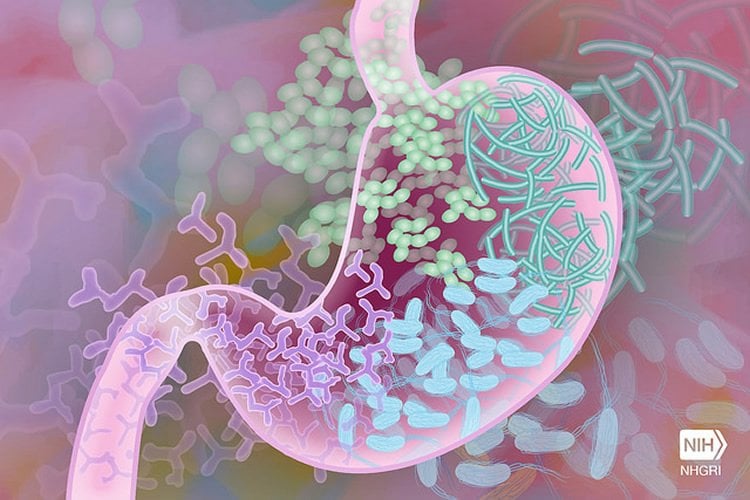Summary: A new study reports FDA approved artificial sweeteners and some sports supplements are toxic to digestive gut bacteria. Researchers say the consumption of artificial sweeteners can adversely affect gut microbial activity, causing a wide range of health issues from cancers to type-2 diabetes.
Source: Ben-Gurion University.
FDA-approved artificial sweeteners and sport supplements were found to be toxic to digestive gut microbes, according to a new paper published in Molecules by researchers at Ben-Gurion University of the Negev (BGU) in Israel and Nanyang Technological University in Singapore.
The collaborative study indicated relative toxicity of six artificial sweeteners (aspartame, sucralose, saccharine, neotame, advantame, and acesulfame potassium-k) and 10 sport supplements containing these artificial sweeteners. The bacteria found in the digestive system became toxic when exposed to concentrations of only one mg./ml. of the artificial sweeteners.
“We modified bioluminescent E. coli bacteria, which luminesce when they detect toxicants and act as a sensing model representative of the complex microbial system,” says Prof. Ariel Kushmaro, John A. Ungar Chair in Biotechnology in the Avram and Stella Goldstein-Goren Department of Biotechnology Engineering, and member of the Ilse Katz Institute for Nanoscale Science and Technology and the National Institute for Biotechnology in the Negev. “This is further evidence that consumption of artificial sweeteners adversely affects gut microbial activity which can cause a wide range of health issues.”
Artificial sweeteners are used in countless food products and soft drinks with reduced sugar content. Many people consume this added ingredient without their knowledge. Moreover, artificial sweeteners have been identified as emerging environmental pollutants, and can be found in drinking and surface water, and groundwater aquifers.

“The results of this study might help in understanding the relative toxicity of artificial sweeteners and the potential of negative effects on the gut microbial community as well as the environment.
Furthermore, the tested bioluminescent bacterial panel can potentially be used for detecting artificial sweeteners in the environment,” says Prof. Kushmaro.
Funding: This study was supported by the National Research Foundation of Singapore under the Campus for Research Excellence and Technological Enterprise (CREATE) and the Singapore-HUJ Alliance for Research and Enterprise (SHARE), The Institute for Sport Research and the Singapore International Graduate Award.
Additional researchers who participated in the study from Ben-Gurion University are Dorin Harpaz, Ph.D. student, and Prof. Robert S. Marks. Other researchers include Trish H. P. Koon, Alfred I. Y. Tok, Loo Pin Yeo, Francesca Cecchini , and Evgeni Eltzov. “Measuring Artificial Sweeteners Toxicity Using a Bioluminescent Bacterial Panel.” Molecules 2018, 23 (10), 2454 doi.org/10.3390/molecules23102454.
Source: Andrew Lavin – Ben-Gurion University
Publisher: Organized by NeuroscienceNews.com.
Image Source: NeuroscienceNews.com image is in the public domain.
Original Research: Open access research for “Measuring Artificial Sweeteners Toxicity Using a Bioluminescent Bacterial Panel” by Dorin Harpaz, Loo Pin Yeo, Francesca Cecchin, Trish H. P. Koon, Ariel Kushmaro, Alfred I. Y. Tok, Robert S. Marks, and Evgeni Eltzov in Molecules. Published October 2018.
doi:10.3390/molecules23102454
[cbtabs][cbtab title=”MLA”]Ben-Gurion University”Artificial Sweeteners Have Toxic Effects on Gut Bacteria.” NeuroscienceNews. NeuroscienceNews, 1 October 2018.
<https://neurosciencenews.com/artificial-sweetener-microbiome-9935/>.[/cbtab][cbtab title=”APA”]Ben-Gurion University(2018, October 1). Artificial Sweeteners Have Toxic Effects on Gut Bacteria. NeuroscienceNews. Retrieved October 1, 2018 from https://neurosciencenews.com/artificial-sweetener-microbiome-9935/[/cbtab][cbtab title=”Chicago”]Ben-Gurion University”Artificial Sweeteners Have Toxic Effects on Gut Bacteria.” https://neurosciencenews.com/artificial-sweetener-microbiome-9935/ (accessed October 1, 2018).[/cbtab][/cbtabs]
Abstract
Measuring Artificial Sweeteners Toxicity Using a Bioluminescent Bacterial Panel
Artificial sweeteners have become increasingly controversial due to their questionable influence on consumers’ health. They are introduced in most foods and many consume this added ingredient without their knowledge. Currently, there is still no consensus regarding the health consequences of artificial sweeteners intake as they have not been fully investigated. Consumption of artificial sweeteners has been linked with adverse effects such as cancer, weight gain, metabolic disorders, type-2 diabetes and alteration of gut microbiota activity. Moreover, artificial sweeteners have been identified as emerging environmental pollutants, and can be found in receiving waters, i.e., surface waters, groundwater aquifers and drinking waters. In this study, the relative toxicity of six FDA-approved artificial sweeteners (aspartame, sucralose, saccharine, neotame, advantame and acesulfame potassium-k (ace-k)) and that of ten sport supplements containing these artificial sweeteners, were tested using genetically modified bioluminescent bacteria from E. coli. The bioluminescent bacteria, which luminesce when they detect toxicants, act as a sensing model representative of the complex microbial system. Both induced luminescent signals and bacterial growth were measured. Toxic effects were found when the bacteria were exposed to certain concentrations of the artificial sweeteners. In the bioluminescence activity assay, two toxicity response patterns were observed, namely, the induction and inhibition of the bioluminescent signal. An inhibition response pattern may be observed in the response of sucralose in all the tested strains: TV1061 (MLIC = 1 mg/mL), DPD2544 (MLIC = 50 mg/mL) and DPD2794 (MLIC = 100 mg/mL). It is also observed in neotame in the DPD2544 (MLIC = 2 mg/mL) strain. On the other hand, the induction response pattern may be observed in its response in saccharin in TV1061 (MLIndC = 5 mg/mL) and DPD2794 (MLIndC = 5 mg/mL) strains, aspartame in DPD2794 (MLIndC = 4 mg/mL) strain, and ace-k in DPD2794 (MLIndC = 10 mg/mL) strain. The results of this study may help in understanding the relative toxicity of artificial sweeteners on E. coli, a sensing model representative of the gut bacteria. Furthermore, the tested bioluminescent bacterial panel can potentially be used for detecting artificial sweeteners in the environment, using a specific mode-of-action pattern.







